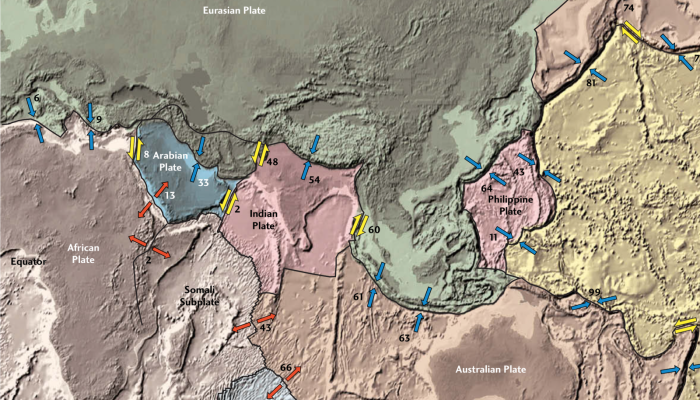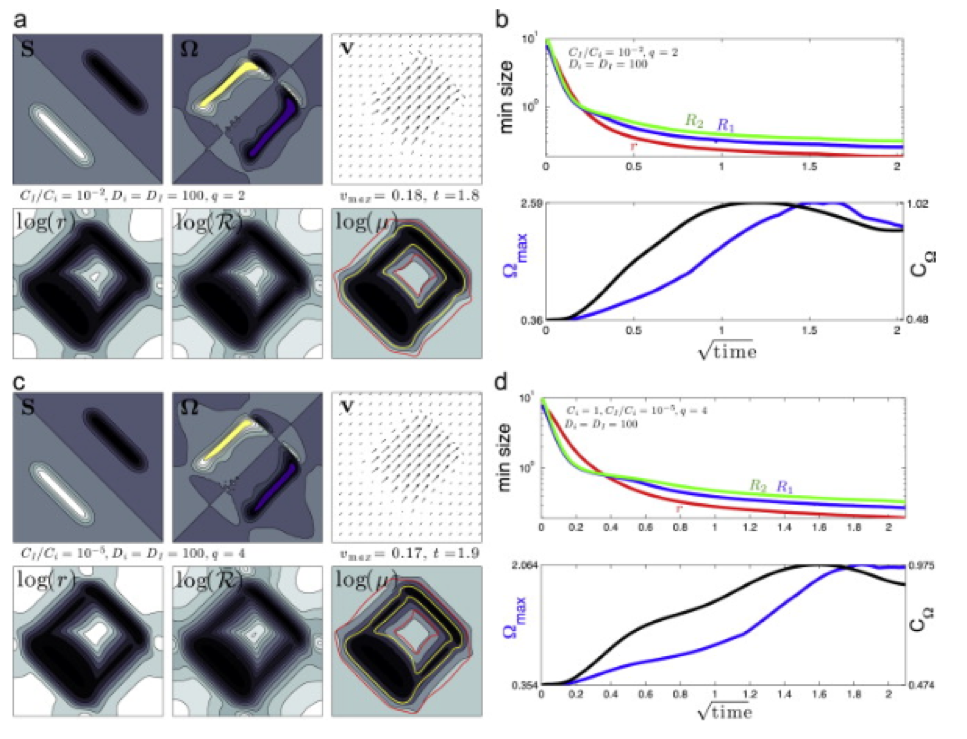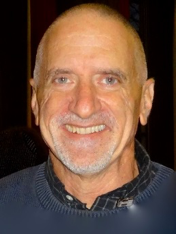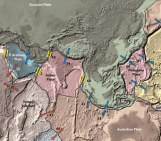
These blogposts present interviews with outstanding scientists that bloomed and shape the theory that revolutionised Earth Sciences — Plate Tectonics. Get to know them, learn from their experience, discover the pieces of advice they share and find out where the newest challenges lie!
Meeting David Bercovici
David Bercovici started his scientific career with a BSc in Physics, and eventually graduated with a PhD in geophysics and space physics [from UCLA]. He was a professor at the University of Hawaii from 1990 until 2000. In 1996 he received the James B. Macelwane Medal from the AGU for his contributions to geophysical sciences as a young scientist. Since 2001 he has been at Yale as a professor in Geology and Geophysics, and is currently Department Chair (for the 2nd time). In the last few years he was elected to both the American Academy of Arts & Sciences and the US National Academy of Sciences.
For me, the biggest question I still would like to answer is: why do we have plate tectonics?
Could you briefly describe your research interests, David?
My research interests are in geophysical and geological fluid dynamics, especially to understand lithosphere and mantle dynamics. I’m mostly a theoretician, which means I do more pen and paper work developing theories and models of geophysical processes, not so much in the way of numerical simulations. My area of interest right now is understanding rock rheology at the grain scale in a physical way. For example, the softening feedback mechanisms we think are working on rocks to generate plate boundaries are quite complicated. However, if we are able to understand them for Earth, perhaps we can use them to understand the conditions for whether plate tectonics can occur on other planets, too. Mylonites are a good example of rocks that probably undergo a self-softening feedback, since it appears that deformation causes their mineral grains to shrink, which makes them softer, which then focusses or localizes their deformation, and so on.
You have been around for some time. What do you consider your biggest achievement within your field of expertise?
Overall I believe we’ve made a lot of progress in trying to understand why Earth has plate tectonics (and maybe why other planets in our solar system do not). A lot of the physics necessary to advance this field relates to exotic rock rheologies, and this has involved a collaboration between experimental rock physicists and geodynamical theoreticians and modelers. Rock physicists like my Yale colleague Shun Karato, David Kohlstedt (at the University of Minnesota) and Greg Hirth (at Brown University) have been a big influence on me. I think my own contribution has been in developing ‘grain damage theory’ which describes how mineral grains evolve under deformation and cause weakening as we see in mylonites. I and my colleagues (most notably Yanick Ricard at the ENS-Lyon, but also former students William Landuyt now at Exxon and Brad Foley now at Penn State, and my two current collaborators Elvira Mulyukova at Yale and Phil Skemer at Washington University in St. Louis) have developed and continue to develop theories for how grains damage. I consider the physics that we’ve developed for this a significant accomplishment.

Bercovici, D. & Ricard, Y., 2013. Earth and Planetary Science Letters, 275-288.
So besides your projects related to ‘damage physics’, do you have side-projects too?

David Bercovici – Credit: David Bercovici
Yes, I do! I currently have a project working on oscillations and magmatic waves in volcanic systems before eruptions with various colleagues (most notably Mark Jellinek at the University of British Columbia and Chloé Michaut at the ENS-Lyon). And I have worked on problems that are related to the presence and circulation of water in the mantle. I and my colleague Shun Karato proposed the reasonably well-known (and controversial) transition zone water filter model. This theory argued that the upper and lower mantle are kept somewhat chemically distinct but without actual layering (which is usually required to explain the difference in basalts coming up at mid-ocean ridges versus ocean islands like Hawaii) by hydrous melting of material upwelling out of the transition zone, just at the 410 discontinuity. This melting then cleans the rising mantle of incompatible elements, much like a coffee filter (or maybe more like a hookah), allowing mid-ocean ridge basalts to look depleted.
One of the biggest challenges today is to predict and understand how other planets function.
You have quite some different interests! Overall, what do you consider the biggest scientific challenges in your field nowadays?
One of the biggest challenges today is to predict and understand how other planets function. Do they have plate tectonics or not? If not, could they have had plate tectonics at one time, and then why did it stop? We need to do tests and get data from other planetary and extra-solar bodies. Currently, we only have data from the Moon, Mercury, Mars and Venus (and also outer-solar system icy bodies). We are a long way from understanding our universe and the objects residing in it. I think that the model of plate tectonics as we know it nowadays is maybe just a recipe describing our own planet, but will not necessarily work for others.
Any model or code is only as good as the physics being used
So to get to there, what do you think could be improved in your field?
In geodynamics, constructing and using big numerical models is very popular nowadays. There is a danger here though, because users of these models do not always understand the physics behind the code they are using, and that some of this physics is incomplete. Any model or code is only as good as the physics being used, and we do not necessarily understand all this physics yet. It is very important to understand how the numerical tool is constructed, or at least its limitations, and we really need to emphasize this. Ideally, everyone using a model would understand how the model works, but as codes become more complicated this becomes less practical or feasible. But at the very least, before you use a model, you should think about how to interpret it. One can first develop a simpler theory or scaling-law to hypothesize or predict what the model might do, and then treat the numerical simulation like an experiment to test (and perhaps disprove or perhaps refine) this hypothesis. This will make your study much more valuable and long-lasting.
You still have some time to continue your research. How do you see the remainder of your career?
I certainly hope to have some more discoveries coming up. You often have a broad idea or hypothesis that gives some direction where you should go, but you’re often surprised about what you discover along the way. One of the things I work on now is the metal asteroid Psyche. One question is as such an asteroid freezes completely, can it sustain a magnetic field? This is a completely new direction for me and I find it very exciting! Whether my ideas will work or not, I can’t say yet. But sometimes my more successful ideas developed in a folder on my computer called ‘Cool or Stupid?’. One of my more well-known papers had that as a working title for a couple of years.
I was a terrible student.
What advice would you like to give today’s Early Career Scientists?
When I was an undergraduate and for some time in graduate school, I was a terrible student. I didn’t even make it into graduate school at first! So my expectations were rather low. Probably my one redeeming quality was that I was stubborn and persistent. I figured I would continue to try to make it in graduate school until the university police were called to escort me off campus, which luckily never happened. My best advice is that if you feel you have found out what you want to do, be stubborn, but not so stubborn and rigid as not to learn new things and try ideas outside of your comfort zone.
My second advice is that you should ask yourself what big question do you want to answer in your life? What would you like written on your tombstone that you tried to accomplish? Find yourself that question and make it your life goal. For me, the biggest question I still would like to answer is: why do we have plate tectonics?
Interview conducted by Anouk Beniest

